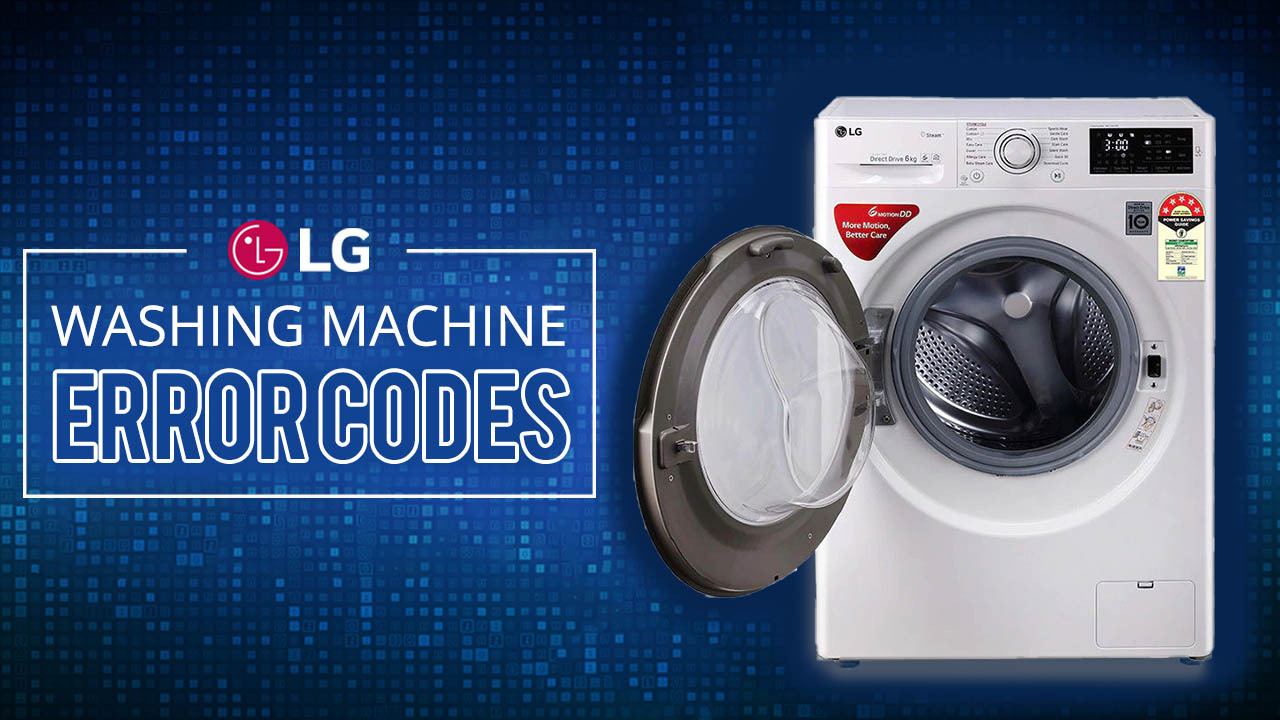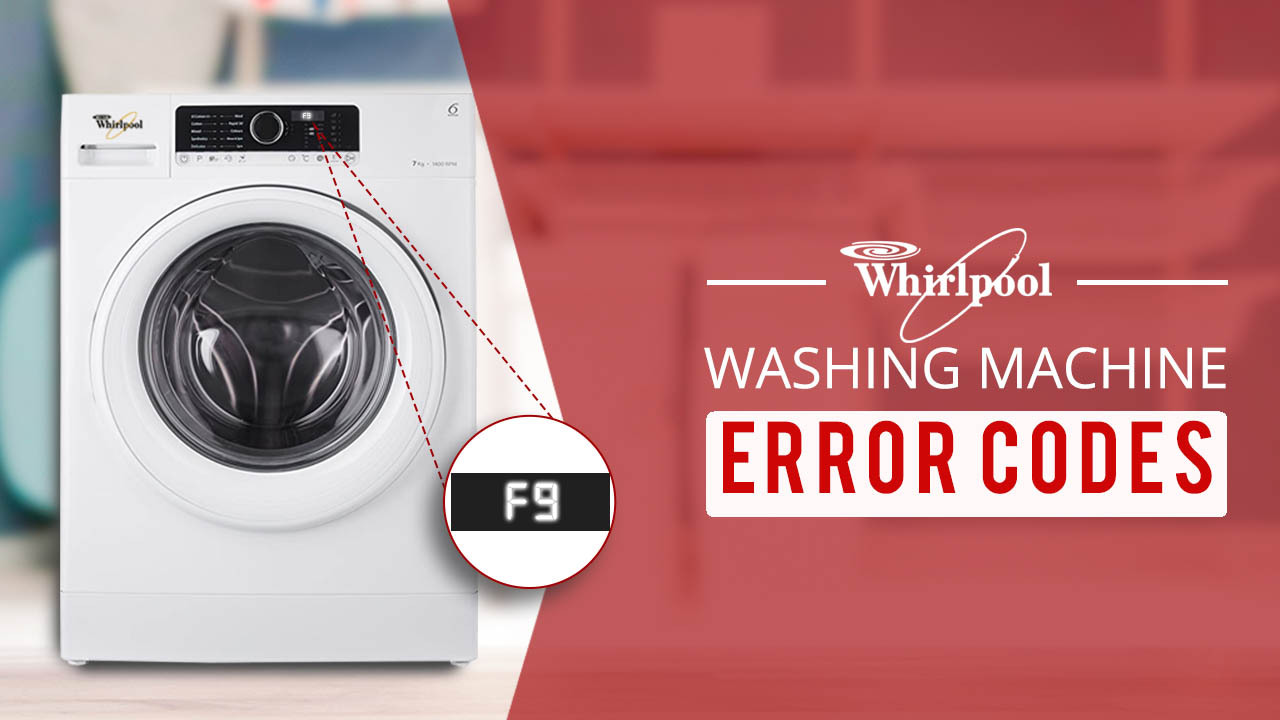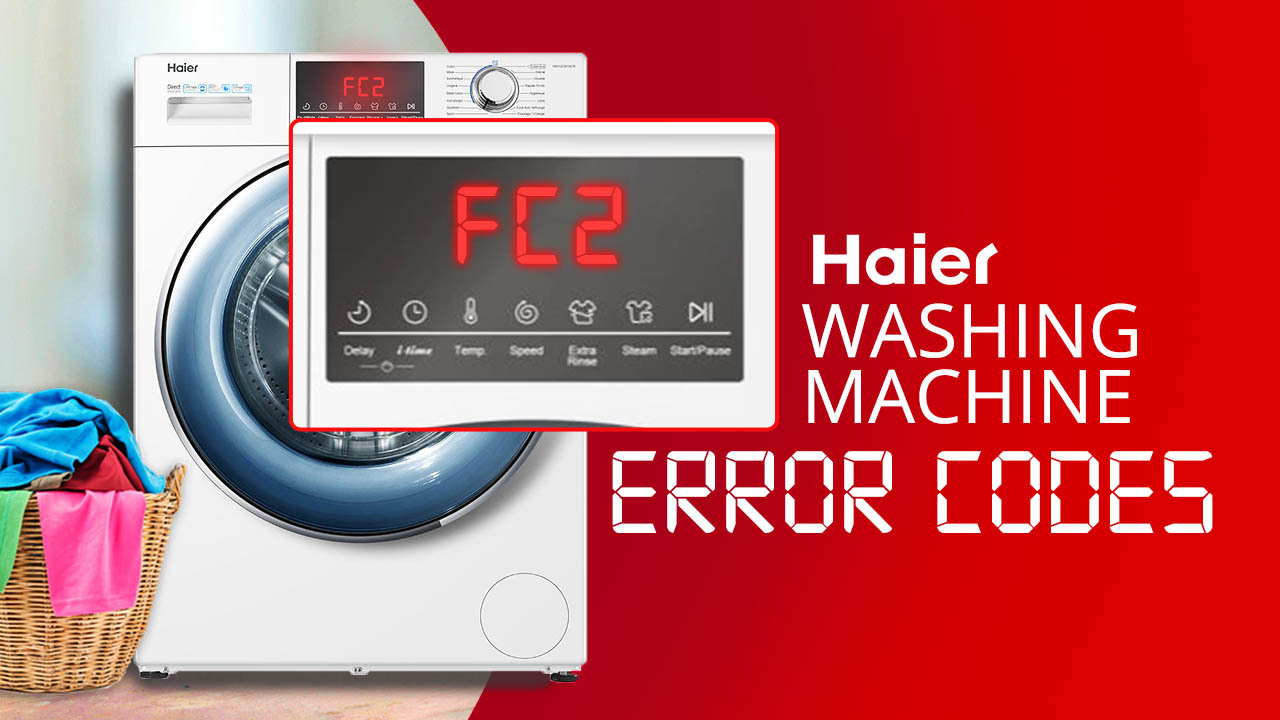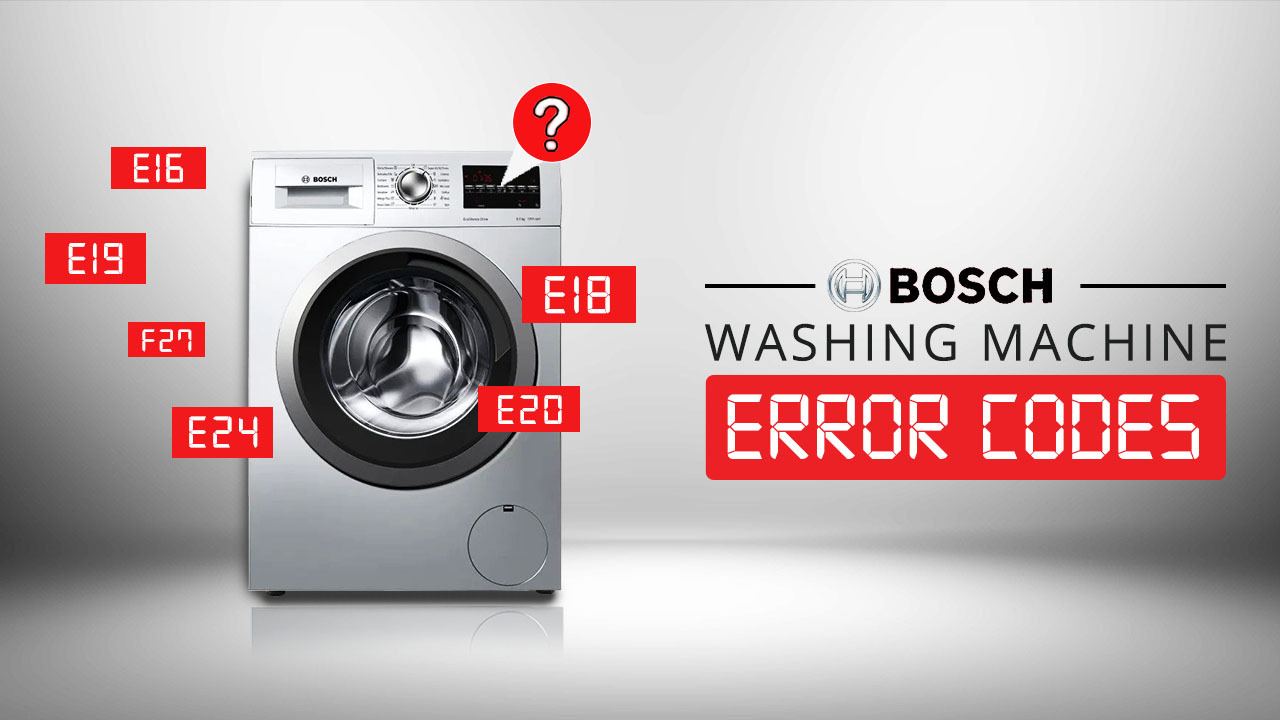If you have a washing machine, it’s essential to know how to drain water from automatic washing machine properly. Water not draining from the machine can signify a bigger problem, so taking action immediately is vital. In the blog below we discuss why the machine drains water, why it may have stopped doing so and what you can do about the situation.
Sometimes water collects in the drum at the end of the washing machine’s wash cycle, soaking your garments. This is a common problem with appliances over a few years old. How to drain water from automatic washing machine? What are the most common causes of a washing machine that won’t drain, and what can you do about it?
Why Do Washing Machines Drain Water?
Washing machines are powerful machines that use water to clean clothes. The water is used to break up dirt and stains on clothes and then rinse them clean. After the cycle is complete, the water needs to be drained so that fresh water can be used for the next load. Washing machines typically have a pump that helps to remove the water from the machine.
The pump is located near the bottom of the washing machine and is connected to a drainage hose. When the washing machine is turned on, the pump activates and starts to push the water out of the machine through the hose.
Once all of the water has been removed, the pump turns off and fresh water can enter the machine for the next load. Most households today have the best washing machine thanks to companies making models of all kinds that suit everyone’s needs and budgets. This is why knowing how to drain water from automatic washing machine is essential information. Keep reading to find out more!
Why Is Water Not Draining From Washing Machine?
Before we begin understanding how to drain water from automatic washing machine, we must understand why the water isn’t draining in the first place. Below are some possible reasons to keep in mind –
- One of the most common causes of a washing machine’s inability to drain water is the existence of an object lodged in the drain pump or a blocked filter. As a result, one of the first things to check is the filter, which is critical for absorbing contaminants and small objects: drainage cannot occur if the filter is obstructed or clogged.
- Similarly, the drain hose, responsible for removing water from the washing machine, could be kinked or clogged. It’s also crucial to ensure that the house’s drain line, to which the pipe is linked, isn’t clogged.
- If neither the filter nor the tube is clogged, the drain pump may be the source of the problem. The dirty water must be drained at the end of the wash cycle. Hence this pump is required. Small things in the pump, such as socks or coins, might block it and cause the turbine to stop rotating correctly.
- The erroneous closure of the solenoid valve is another reason why water can be found at the end of the cycle. Although the latter should be regulated by the software that governs the washing program, if it is unclean or malfunctioning, it can remain slightly open, causing the washing machine to fill with water until the washing cycle is completed.
- Have you ever had excessive suds in your washing machine because you used too much detergent? This could also jeopardize the spin cycle’s proper operation and the drainage of the washing machine’s water.
Now that you have a brief idea about the possible reasons, learn about how to drain water from your machine in the next section.
How to Drain Water From Automatic Washing Machine
Do not become alarmed if your washing machine does not drain. First, double-check the program you’ve set up. The “anti-crease,” “stop water in the tank,” and “night” cycles are examples of settings that do not include the spin or the final drain. If the problem persists continue reading below –
1. Reduce the Amount of Detergent Used

Reduce the amount of detergent used if the problem is caused by froth, as we’ve observed before. You’ll have to intercede in the washer if this isn’t the case. Remove the plug from the socket to unplug it from the mains.
2. Unclog the Filter
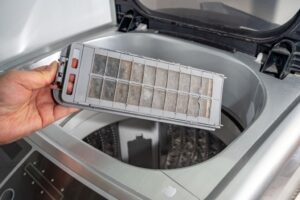
Then look at the filter. It is positioned at the bottom and accessible from the front and left of your washing machines. To open the filter, unscrew the lid, then place a cloth on the ground to catch the water that spills out. You can clean the filter by rinsing it under running water once it’s been opened.
3. Clear Out the Pump
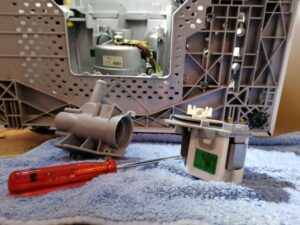
Remove any debris inside the pump (the section that remains attached to the washing machine) and ensure the turbine isn’t blocked by small objects (coins, buttons, pins, etc.). The turbine should be allowed to revolve freely.
4. Call a Professional

If the pump still does not start or drain after cleaning everything, it is electrically broken and needs to be replaced. If there are more serious technical issues, we recommend hiring a professional technician in case you notice that the water not draining from washing machine despite following all the tips above.
How To Drain Water On Your Own
Step Wise Instructions to Drain Water Manually From Washing Machine
Top-Loading Washing Machine
To begin with, collect the following:
- Bucket of water
- Needle-nose pliers
- Screwdrivers
- Towels
- A shallow container
- Washing machine manual for reference
Next, follow these steps:
1. Unplug From Mains
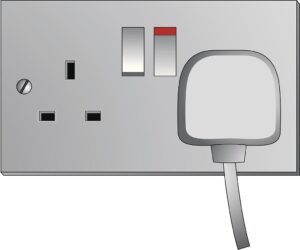
Before you learn how to drain water from automatic washing machine, switch off the power and unplug the machine to be extra secure. You can also switch off the appropriate circuit breaker if it is hard-wired into your electrical system. This eliminates the possibility of electric shock. Towels should be placed around the washing machine in case of a spill. After you’ve followed these precautions, you can start disassembling the machine.
2. Remove the Hose
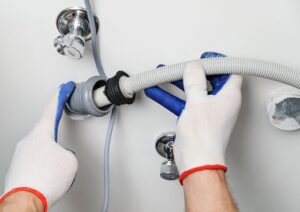
The drain hose is generally behind the washing machine. To make extra room, pull the washer away from the wall. You should see three hoses. These hoses are commonly color-coded: red for hot water, blue for cold water, and grey for the drain. As a precaution, you may want to turn off the water supply to the hot and cold hoses. The drain line should then be disconnected from the pipe and held above the washing machine to prevent water from spilling. After taking care of the drain hose, you can move on to Step 3.
3. Drain
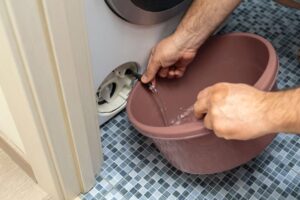
Depending on the size of your washing machine, draining a load of clothes can take anywhere from 30 to 60 minutes. That’s a lot of water, and if you’re not careful, it could rapidly become a major disaster. The simplest solution is to just pour all of the water into a bucket. Begin by lowering the drain hose into the bucket after disconnecting it from the pipe. Reconnect the hose once the bucket is filled and let gravity do the rest. Continue until the washing machine is completely empty. It’s a simple procedure that will save you time and aggravation in the long run.
Front-Loading Washing Machine
Steps to drain front-loading washing machine:
1. Take Precautions
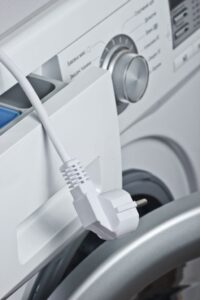
It’s critical to take certain safety precautions before you begin. To begin, disconnect the washing machine from the mains and place towels on the floor to catch any spilled water. The rubber hoses that link the washing machine to the water supply are known as hoses. Look for these post placing the towels. Move to Step 2.
2. Access Drain Pipe
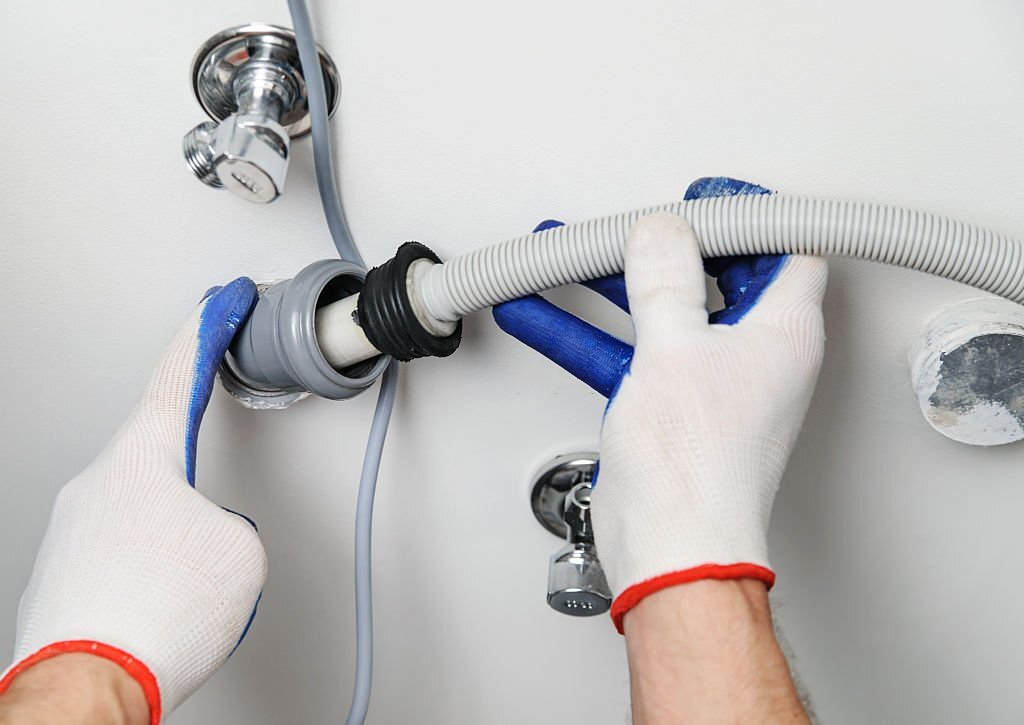
A drainpipe filter is usually found behind the panel on the bottom in most front-load washers. There may also be a separate drain hose in some cases. The owner’s manual should be used to figure out how to open the panel. A screwdriver will be necessary, so make sure you have one handy. The drainpipe filter is usually quite easy to access once the panel is opened. Cleaning the drainpipe filter regularly is necessary to prevent lint buildup and ensure that the washing machine functions properly.
3. Clean the Filter
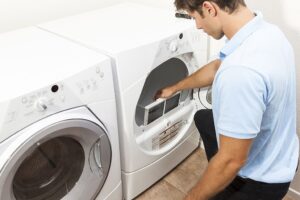
The filter is normally hidden behind a little door in the machine’s lower left-hand corner on front-loading machines. Remove the filter once you find it and check for any blockages. If it is clogged, rinse it under running water until it is clear of all debris. The filter is an integral aspect of the circulation system in your pool. It aids in the removal of dirt and debris from the water, ensuring that it remains clean and clear. It’s critical to keep the filter clean to maintain a healthy pool, therefore do so regularly.
Remove any visible debris from the filter before cleaning it. Then, lightly scrub the filter with warm water using a soft-bristled brush or your hand. Scrubbing too aggressively may cause the filter to become damaged. After scrubbing, rinse the filter and return it to the pool with clean water.
Replace the filter when cleaned, and close any access panels or doors. Finally, reconnect your washing machine and perform a short cycle to ensure it’s working properly.
Now that you have learned how to drain water from automatic washing machine, you can go ahead and solve the issue yourself! However, we do urge you to call a professional rather than dealing with the issue yourself as it can be hazardous if done wrong.
Conclusion
In conclusion, if your washing machine is not draining correctly, there are a few things you can try to fix the problem. First, check the drain hose for any kinks or blockages. If the hose is clear, the pump may be an issue. The pump is responsible for moving water out of the washing machine, so if it is not working correctly, the water will not drain.
Finally, if neither of these solutions solves the problem, then you may need to call a professional to take a look at your washing machine. With some troubleshooting, you should be able to get your washing machine draining properly in no time. Hopefully, you no longer have to worry about how to drain water from automatic washing machine!
Frequently Asked Questions
1. How to check if the washing machine drain is clogged?
To check if your hose is clogged, remove the hose from the drain connection and try flushing it out with a garden hose. If water doesn’t flow freely through the hose, there may be a blockage. In most cases, you can clear a clogged drain hose using a plunger or a plumber’s snake. Simply inserting either of these tools into the hose and moving it around should dislodge any debris causing the blockage. However, if the problem persists, you may need to call a plumber to clear the line.
2. Why is the water staying in the drum of the washing machine?
There are many reasons why the water may not be draining from the drum of your washing machine. The first is that the washing machine isn’t draining correctly. This could be due to a blockage in the drain hose or pump. Another possibility is that the washer is overloaded, and the spin cycle can’t remove all the water. Finally, there may be a problem with the washing machine itself. You can learn how to drain water from automatic washing machine by reading the blog above!

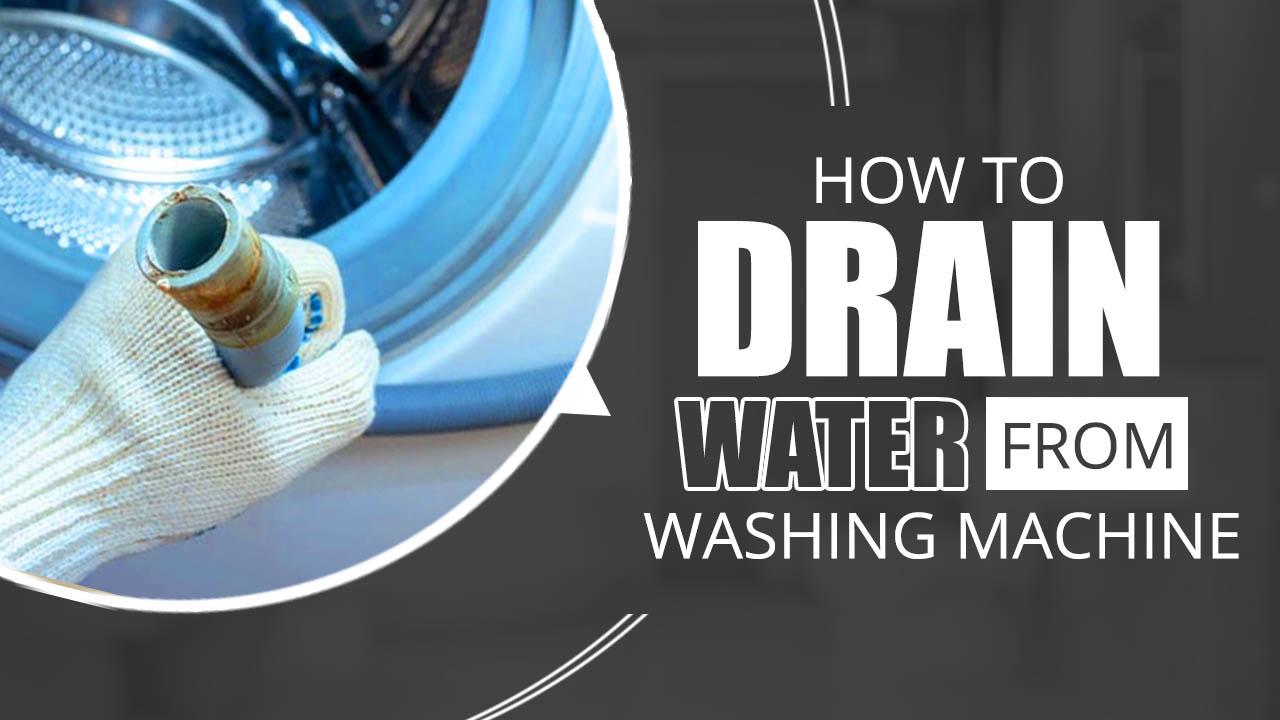
![Washing Machine Dryer Not Working [Solved] Washing Machine Dryer Not Working](https://washingmachine.khojdeal.com/wp-content/uploads/2022/06/washing-machine-dryer-is-not-working.jpg)

